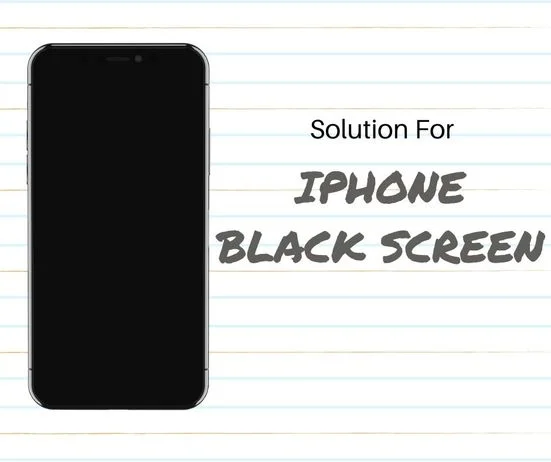When your iPhone has a black screen, it can be concerning and annoying since it prevents you from using your device. Whether it’s a hardware fault, software bug, or battery issue, many iPhone users have experienced the black screen at some point. Thankfully, there are a few things you can attempt to do before getting expert assistance to fix this problem. This comprehensive tutorial will lead you through the process of identifying and resolving a black screen issue with an iPhone.

1. Force Restart Your iPhone
A force restart is often the first and easiest solution to try. It can resolve many minor software issues that might be causing your iPhone to display a black screen.
- For iPhone 8 and later (including iPhone SE 2nd generation and newer):
- Quickly press and release the Volume Up button.
- Quickly press and release the Volume Down button.
- Press and hold the Side button until the Apple logo appears, then release.
- For iPhone 7 and 7 Plus:
- Press and hold both the Volume Down and the Sleep/Wake (Power) button.
- Keep holding both buttons until you see the Apple logo.
- For iPhone 6s, iPhone SE (1st generation), and earlier:
- Press and hold both the Home and the Sleep/Wake (Power) button.
- Keep holding both buttons until the Apple logo appears.
2. Charge Your iPhone
Sometimes, a black screen can simply mean your iPhone’s battery is drained. Plug your iPhone into a power source using its original charger and cable.
- Check for Response: After a few minutes of charging, check if the charging icon appears on the screen. If your iPhone remains unresponsive, move on to the next step.
3. Check Your Cable and Adapter
Faulty charging cables or adapters can cause charging issues leading to a black screen. Use a different cable and adapter, ideally original Apple accessories, to ensure your device is charging properly.
4. Connect to a Computer
If your iPhone still displays a black screen, try connecting it to a computer with iTunes (on Windows or macOS Mojave and earlier) or Finder (on macOS Catalina and later).
- Update or Restore:
- Open iTunes or Finder on your computer.
- Connect your iPhone using a USB cable.
- If your iPhone is recognized, you’ll see the option to Update or Restore. Start with the Update option to reinstall iOS without erasing your data. If this doesn’t work, you might have to choose Restore.
5. Enter Recovery Mode
Entering Recovery Mode allows you to reinstall iOS on your iPhone. This process might erase your device, so consider this step carefully.
- For iPhone 8 and later:
- Connect your iPhone to your computer.
- Quickly press and release the Volume Up button, then the Volume Down button.
- Press and hold the Side button until you see the Recovery Mode screen.
- For iPhone 7 and 7 Plus:
- Connect your iPhone to your computer.
- Press and hold the Volume Down and Sleep/Wake (Power) button simultaneously.
- Keep holding until the Recovery Mode screen appears.
- For iPhone 6s and earlier:
- Connect your iPhone to your computer.
- Press and hold both the Home and the Sleep/Wake (Power) button.
- Keep holding until the Recovery Mode screen appears.
6. DFU Mode Restore
If Recovery Mode doesn’t work, you can try a DFU (Device Firmware Update) mode restore. This is a deeper restore process that can fix more serious software issues.
- How to Enter DFU Mode:
- Connect your iPhone to your computer and open iTunes or Finder.
- For iPhone 8 and later: Quickly press and release Volume Up, then Volume Down, then hold the Side button until the screen turns black, then hold the Volume Down button while releasing the Side button.
- For iPhone 7 and 7 Plus: Press and hold both the Volume Down and Sleep/Wake (Power) button.
- For iPhone 6s and earlier: Press and hold both the Home and the Sleep/Wake (Power) button for about 8 seconds.
- If the screen remains black and the device is detected by iTunes or Finder, follow the prompts to restore your iPhone.
7. Professional Repair
If none of the above steps work, the issue might be hardware-related. Contact Apple Support or visit an Apple Store or authorized service provider for professional diagnosis and repair.
Conclusion
There are several reasons why your iPhone can have a dark screen, from hardware faults to software bugs. This is a step-by-step instruction that will help you troubleshoot and maybe solve the issue on your own. Always remember that it’s advisable to get professional assistance if you have any questions or feel uneasy doing any of these actions. Such problems can be avoided in the future by utilizing official accessories and keeping your iPhone OS updated.
